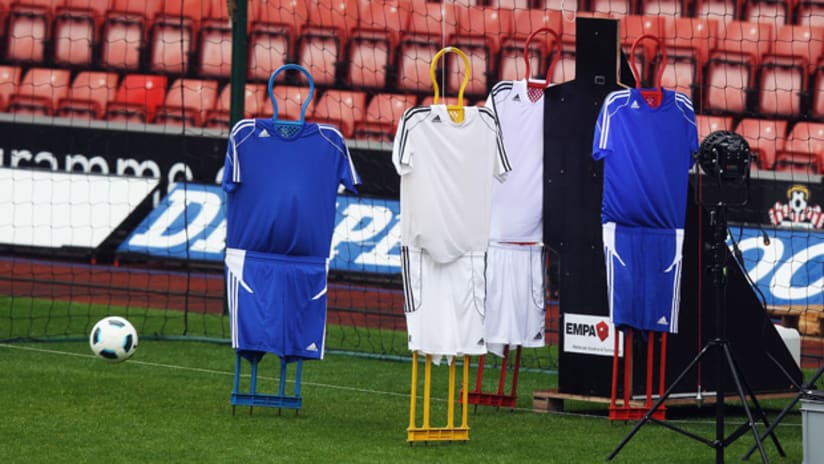FIFA may have officially confirmed the introduction of goal-line technology for the 2014 World Cup and 2013 Confederations Cup, but MLS fans will likely have to wait to see it stateside, potentially until 2015, according to MLS' head of competition.
"I view the news as a positive step forward for the sport," said Nelson Rodriguez, MLS EVP for competition, technical and game operations. "In general, the MLS Board of Governors believes that this introduction of technology is a positive for our league and for the sport in general."
Despite the willingness to bring the technology to MLS, there are plenty of hurdles that the league faces when it comes to implementing it: Rodriguez mentioned, for instance, that there are only two goal-line systems that have been formally approved to date by FIFA and only two service providers that have been licensed by FIFA. Those service providers, according to Rodriguez, have enough to do to keep up with current demand and FIFA doesn't have enough staffers to oversee installation as is currently required under guidelines.
READ: MLS Commissioner on goal-line technology
WATCH: MLS goal-line controversies
Not to mention the time it would take to install the system league wide — Rodriguez estimates it "could take a month or more" — or the testing period that would be needed before officially unveiling it in competitive league play.
"We remain very interested in the technology and in implementing it for Major League Soccer," Rodriguez said. "It's not possible for 2013 and generally we try to be six months out. If there's not enough systems ready to be installed and enough [FIFA] licensing agents to verify the installations are done to spec by the middle of 2013, then I'm not sure 2014 is possible either."
The league would also need to weigh the opportunity cost of investing in the goal-line technology. Are there enough instances of questionable goal-line incidents to warrant an investment that reportedly hovers anywhere between a quarter-million to $400,000 per venue. Rodriguez says it shouldn't matter.
"If you only had one issue and it occurred in MLS Cup, that might be worth it in and of itself," Rodriguez said. "It can't be looked as the quantity of issues. But rather, is this investment in improving the game the best use of those resources at this time? I think that's a fair way to assess it."
READ: Klinsmann wants instant replay in soccer
Competition in the marketplace in the near future could help reduce those costs (FIFA said on Tuesday that two new German companies were entering the fray) and competition may also help create more efficient systems. Currently, the camera-based Hawk-Eye technology and the chip-in-ball magnetic set-up by GoalRef are the only FIFA-approved systems and were most recently employed in December's FIFA Club World Cup, although the game action never put them to the test.
The league says it will continue to maintain conversations with FIFA as well as evaluate the experience of other leagues — the EPL says it will be ready to introduce the technology ahead of its next season. But if you're wondering whether goal-line officials may perhaps serve as a helpful stopgap, don't expect that in MLS any time soon.
"We've unfortunately seen two instances in the last year where goal-line humans didn't get those calls correct," said Rodriguez, referencing a Europa League match and last week's UEFA Champions League match between Celtic and Juventus. "Just on goal-line decisions, it doesn’t seem goal-line humans have performed better than goal-line technology."













